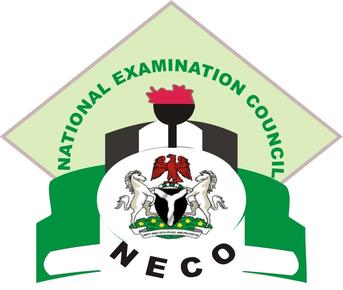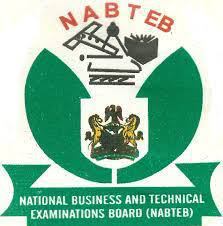2024 JAMB Chemistry Syllabus | Question And Answers
2024 Jamb Chemistry Syllabus Jamb Syllabus for Chemistry, The aim of the Unified Tertiary Matriculation Examination (UTME) syllabus in Chemistry is to prepare the candidates for the Board’s examination. It is designed to test their achievement of the course objectives, which are to:

2024 Jamb Chemistry Syllabus Jamb Syllabus for Chemistry
2024 Jamb Chemistry Syllabus Jamb Syllabus for Chemistry
2. Chemi cal combination
Stoichiometry, laws of definite and multiple proportions, law of conservation of matter, Gay Lussac’s law of combining volumes, Avogadro’s law; chemical symbols, formulae, equations and their uses, relative atomic mass based on 12C=12, the mole concept and Avogadro’s number.
Kinetic theory of matter and Gas Laws
(a) An outline of the kinetic theory of matter, melting, vapourization and reverse processes; melting and boiling explained in terms of molecular motion and Brownian movement.
Candidates should be able to:
i) distinguish between pure and impure substances;
ii) use boiling and melting points as criteria for purity of chemical substances;
(iii) distinguish between elements, compounds and mixture;
(iv) differentiate between chemical and physical changes;
(v) identify the properties of the components of a mixture;
(vi) specify the principle involved in each separation method.
Candidates should be able to:
(i) perform simple calculations involving formulae, equations/chemical composition and the mole concept;
(ii) deduce the chemical laws from given expressions/statements;
(iii) interpret data based on these laws;
(iv) interpret graphical representations related to these laws.
Candidates should be able to:
(i) apply the theory to distinguish between solids, liquids and gases;
(ii) deduce reasons for change of state;
(iii) draw inferences based on molecular motion;
(b) The laws of Boyle, Charles, Graham and Dalton (law of partial pressure); combined gas law, molar volume and atomicity of gases.
2024/2025 Jamb Chemistry Syllabus Jamb Syllabus for Chemistry
4. Atomic structure and bonding
(a) (i)The concept of atoms, molecules and ions, the works of Dalton, Millikan, Rutherford, Mosely, Thompson and Bohr. Simple hydrogen spectrum, Ionization of gases illustrating the electron as fundamental particle of matter.
(ii) Atomic structure, electron configuration, atomic number, mass number and isotopes; specific examples should be drawn from elements of atomic number 1 to 20. Shapes of s and p orbitals.
(b) The periodic table and periodicity of elements, presentation of the periodic table with a view to recognizing families of elements e.g. alkali metals, halogens, the noble gases and transition metals. The variation of the following properties should be noticed: ionization energy, ionic radii, electron affinity and electronegativity.
(c) Chemical bonding.
Electrovalency and covalency, the electron configuration of elements and their tendency to attain the noble gas structure. Hydrogen bonding and metallic bonding as special types of electrovalency and covalency respectively; coordinate bond as a type of covalent bond as illustrated by complexes like [Fe(CN)6]3-, [Fe(CN)6]4-, [Cu(NH3)4]2
and [Ag(NH3)2] ; van der Waals’forces
should be mentioned as a special type of bonding forces.
(d) Shapes of simple molecules: linear ((H2, 02, C12,HCI and CO2), non-linear (H2O) and tetrahedral; (CH4)
(iv) deduce chemical laws form given expressions/ statements;
(v) interpret graphical representations related to these laws;
(vi) perform simple calculations based on these laws and the relationship between the vapour density of gases and the relative molecular mass.
Candidates should be able to:
(i) distinguish between atom, molecules and ions;
(ii) assess the contributions of these scientists to the development of the atomic structure;
(iii) deduce the number of protons, neutrons and electrons from atomic and mass numbers of an atom;
(iv) apply the rules guiding the arrangement of electrons in an atom;
(v) relate isotopy to mass number;
(vi) perform simple calculations on relative atomic mass
(vii) determine the number of electrons in s and p atomic orbitals.
(viii) relate atomic number to the position of an element on the periodic table;
(ix) relate properties of groups of elements on the periodic table;
(x) identify reasons for variation in properties across the period.
(xi) differentiate between the different types of bonding.
(xii) deduce bond types based on electron configurations;
(xiii) relate the nature of bonding to properties of compounds;
(xiv) apply it in everyday chemistry;
(xv) differentiate between the various shapes of molecules
(b) Nuclear Chemistry:
(i) Radioactivity
(elementary treatment only)
(ii) Nuclear reactions. Simple equations, uses and applications of natural and artificial radioactivity.
2024/2025 Jamb Chemistry Syllabus Jamb Syllabus for Chemistry
5. Air
The usual gaseous constituents
–nitrogen, oxygen, water vapour, carbon
(IV) oxide and the noble
gases (argon and neon), proportion of oxygen in the air e.g. by burning
phosphorus or by using alkaline pyrogallol, air as a mixture and some uses of the noble gas.
6. Water
Composition by volume:
Water as a solvent, atmospheric
gases dissolved in water and their biological significance. Water as a product of the combustion of hydrogen.
Hard and soft water:
Temporary and permanent hardness and methods of softening hard water. Purification of town water supplies. Water of crystallization, efflorescence, deliquescence and hygroscopy.
Examples of the substances exhibiting these properties and their uses.
2024 Jamb Chemistry Syllabus Jamb Syllabus for Chemistry
7. Solubility
(a) Unsaturated, saturated
and supersaturated solutions. Solubility curves and simple deductions from them, (solubility defined in terms of mole per dm3) and simple calculations.
xvi) distinguish between ordinary chemical reaction and nuclear reaction;
(xvii) differentiate between natural and artificial radioactivity;
(xviii) compare the properties of the different types of nuclear radiations;
(xix) compute simple calculations on the half-life of a radioactive material;
(xx) balance simple nuclear equation;
(xxi) identify the various applications of radioactivity.
Candidates should be able to:
(i) deduce reason (s) for the existence of air as a mixture;
(ii) identify the principle involved in the separation of air components;
(iii) deduce reasons for the variation in the composition of air in the environment;
(iv) specify the uses of some of the constituents of air.
Candidates should be able to:
(i) identify the various uses of water;
(ii) distinguish between the properties of hard and soft water;
(iii) determine the causes of hardness;
(iv) identify methods of removal of hardness;
(v) describe the processes involved in the purification of water for town supply;
(vi) distinguish between these phenomena;
(vii) identify the various compounds that exhibit these phenomena.
Candidates should be able to:
(i) distinguish between the different types of solutions;
(ii) interpret solubility curves;
(iii) calculate the amount of solute that can dissolve in a given amount of solvent at a given temperature;
(iv) deduce that solubility is temperature-dependent;
(b) Solvents for fats, oil and paints and the use of such solvents
for the removal of stains.
(c) Suspensions and colloids: Harmattan haze and paints as examples of suspensions and fog, milk, aerosol spray and rubber solution as examples of colloids.
8. Enviro nmental Pollution
(a) Sources and effects of pollutants.
(b) Air pollution:
Examples of air pollutants such as H2S, CO, SO2, oxides of nitrogen, fluorocarbons and dust.
(c) Water pollution
Sewage and oil pollution should be known.
(d) Soil pollution:
Oil spillage, Biodegradable and non-biodegradable pollutants.
9. Acids, bases and salts
(a) General characteristics and properties of acids, bases and salts. Acids/base indicators, basicity of acids, normal, acidic, basic and double salts. An acid defined as a substance whose aqueous solution furnishes H3O ions or as a proton donor. Ethanoic, citric and tartaric acids as examples of naturally occurring organic acids, alums as examples of double salts, preparation of salts by neutralization, precipitation and action of acids on metals. Oxides and trioxocarbonate (IV) salts
(b) Qualitative comparison of the conductances of molar solutions of strong and weak acids and bases, relationship between conductance, amount of ions present and their relative mobilities.
(v) classify solvents based on their uses;
(vi) differentiate between a true solution, suspension and colloids;
(vii) compare the properties of a true solution and a‘false’solution.
(viii) provide typical examples of suspensions and colloids.
Candidates should be able to:
(i) identify the different types of pollution and pollutants;
(ii) classify pollutants as biodegradable and non-biodegradable;
(iii) assess the effects of pollution on the environment;
(iv) recommend measures for control of environment pollution.
Candidates should be able to:
(i) distinguish between the properties of acids and bases;
(ii) identify the different types of acids and bases;
(iii) differentiate between acidity and alkalinity using acid/base indicators;
(iv) identify the various methods of preparation of salts;
(v) classify different types of salts;
vi) relate degree of dissociation to strength of acids and bases;
(vii) relate degree of dissociation to conductance;
(c) pH and pOH scale.
pH defined as–log[H3O ]
(d) Acid/base titrations.
(e) Hydrolysis of salts: Simple examples such as
NH4C1, AICI3, Na2CO3, CH3COONa to be
mentioned
10. Oxidation and reduction
(a) Oxidation in terms of the addition of oxygen or removal of hydrogen.
(b) Reduction as removal of oxygen or addition of hydrogen.
(c) Oxidation and reduction in terms of electron transfer.
(d) Use of oxidation numbers. Oxidation and reduction treated as change in oxidation.
number and use of oxidation numbers in balancing simple equations.
IUPAC nomenclature of inorganic compounds.
(e) Tests for oxidizing and reducing agents.
11. Electrolysis
(a) Electrolytes and non-electrolytes. Faraday’s laws of electrolysis.
(b) Electrolysis of dilute H2SO4,
aqueous CuSO4, CuC12 solution, dilute and concentrated NaC1 solutions and fused NaC1 and factors affecting discharge
of ions at the electrodes.
(viii) perform simple calculations on pH;
(ix) identify the appropriate acid-base indicator;
(x) interpret graphical representation of titration curves;
(xi) perform simple calculations based on the mole concept;
(xii) balance equations for the hydrolysis of salts;
(xiii) deduce the properties (acidic, basic, neutral) of the resultant solution.
Candidates should be able to:
(i) identify the various forms of expressing oxidation and reduction;
(ii) classify chemical reactions in terms of oxidation or reduction;
(iii) balance redox reaction equations;
(iv) deduce the oxidation number of chemical species;
(v) compute the number of electron transfer in redox reactions;
(vi) identify the name of redox species using IUPAC nomenclature.
(vii) distinguish between oxidizing and reducing agents in redox reactions.
Candidates should be able to:
(i) identify between electrolytes and non- electrolytes;
(ii) perform calculations based on faraday as a mole of electrons.
(iii) identify suitable electrodes for different electrolytes.
(iv) specify the chemical reactions at the electrodes;
(v) determine the products at the electrodes;
(vi) identify the factors that affect the product of electrolysis;
(c) Uses of electrolysis: Purification of metals e.g. copper and production of elements and compounds
e.g. A1, Na, O2, Cl2 and NaOH.
(d) Electrochemical cells:
Redox series (K, Na, Ca, Mg, AI, Zn, Fe, PbII, H, Cu, Hg, Au,)
half-cell reactions and electrode potentials. Simple calculations only.
(e) Corrosion as an electrolytic process, cathodic protection of metals, painting, electroplating and coating with grease or oil as ways of preventing iron from corrosion.
12. Energy changes
(a) Energy changes(∆H) accompanying physical and chemical changes:
dissolution of substances in or reaction with water e.g. Na, NaOH, K, NH4, Cl. Endothermic ( ∆H) and exothermic (-∆H) reactions.
(b) Entropy as an order-disorder phenomenon: simple illustrations like mixing of gases and dissolution of salts.
(c) Spontaneity of reactions:
0
∆G = 0 as a criterion for
equilibrium,∆G greater or
less than zero as a criterion for non-spontaneity or spontaneity.
13. Rates o f Chemical Reaction
(a) Elementary treatment of the following factors which can change the rate of a chemical reaction:
(i) Temperature e.g. the reaction between HCI and Na2S2O3 or Mg and HCI
(vii) specify the different areas of application of electrolysis;
(viii) identify the various electrochemical cells;
(ix) calculate electrode potentials using half- cell reaction equations;
(x) determine the different areas of applications of electrolytic processes;
(XI) apply the methods to protect metals.
Candidates should be able to:
(i) determine the types of heat changes
(∆H) in physical and chemical processes;
(ii) interpret graphical representations of heat changes;
(iii) relate the physical state of a substance to the degree of orderliness;
(iv) determine the conditions for spontaneity of a reaction ;
(v) relate ( H), S0 and G0 as the driving
∆∆∆
forces for chemical reactions;
(vi) solve simple problems based on the relationships G0= H0 -T S0)
∆∆∆
Candidates should be able to:
(i) identify the factors that affect the rates of a chemical reaction;
(ii) determine the effects of these factors on the rate of reactions;
(iii) recommend ways of moderating these effects;
(ii) Concentration e.g. the reaction between HCl and Na2S2O3, HCl and marble and the iodine clock reaction, for gaseous systems, pressure may be used as concentration term.
(iii) Surface area e.g. the reaction between marble and HCI with marble in
2024 Jamb Chemistry Syllabus Jamb Syllabus for Chemistry
(i) powdered form
(ii) lumps of the same mass.
(iv) Catalyst e.g. the decomposition of H2O2 or KCIO3 in the presence or absence of MnO2
(b) Concentration/time curves.
(c) Activation energy
Qualitative treatment of Arrhenius’law and the collision theory, effect of
light on some reactions. e.g. halogenation of alkanes
iv) examine the effect of concentration on the rate of a chemical reaction;
(v) describe how the rate of a chemical reaction is affected by surface area;
(vi) determine the types of catalysts suitable for different reactions.
(vii) interpret reaction rate curves;
(viii) solve simple problems on the rate of reactions;
(x) relate the rate of reaction to the kinetic theory of matter.
(xi) examine the significance of activation energy to chemical reactions.
(xi) deduce the value of activation energy (Ea) from reaction rate curves.
Candidates should be able to:
(i) identify the factors that affects the position of equilibrium of a chemical reaction;
That is all on 2024
Jamb Chemistry Syllabus Jamb Syllabus for Chemistry, Feel free to ask Questions concerning 2024 Jamb Chemistry Syllabus Jamb Syllabus for Chemistry using the comments section below.
Posted by Examquestion on July 26, 2018.
Tags: 2019/2020, 2023 JAMB Chemistry Questions and Answers, 2024 jamb chemistry questions and answers, 2024 jamb chemistry questions and answers pdf, 2024 jamb chemistry questions pdf, 2024 jamb utme chemistry questions and answers, 2024 jamb utme chemistry questions and answers pdf, 2024 jamb utme chemistry questions pdf, and, ANSWERS, Calculations in chemistry for JAMB, CBT, Chemistry, Chemistry JAMB past questions and answers PDF, chemistry jamb question 2022/2023, Chemistry JAMB question 2023 PDF, Chemistry jamb question 2024, How many questions are in JAMB Chemistry, Is chemistry hard in JAMB?, Jamb, JAMB Chemistry past questions, JAMB Chemistry questions and answers, JAMB Chemistry questions and Answers PDF, JAMB Chemistry Syllabus 2024, jamb question 2023/2024, jamb question for 2024/2025, JAMB Questions and Answers 2024, Jamb questions on organic chemistry, Jamb utme chemistry questions 2021, Jamb utme chemistry questions and answers, Jamb utme chemistry questions and answers pdf, Jamb utme chemistry questions pdf, Question, Syllabus, What are the most repeated topics in JAMB chemistry?, What is the JAMB focus on chemistry?
Categories: Jamb Syllabus | Past Questions





